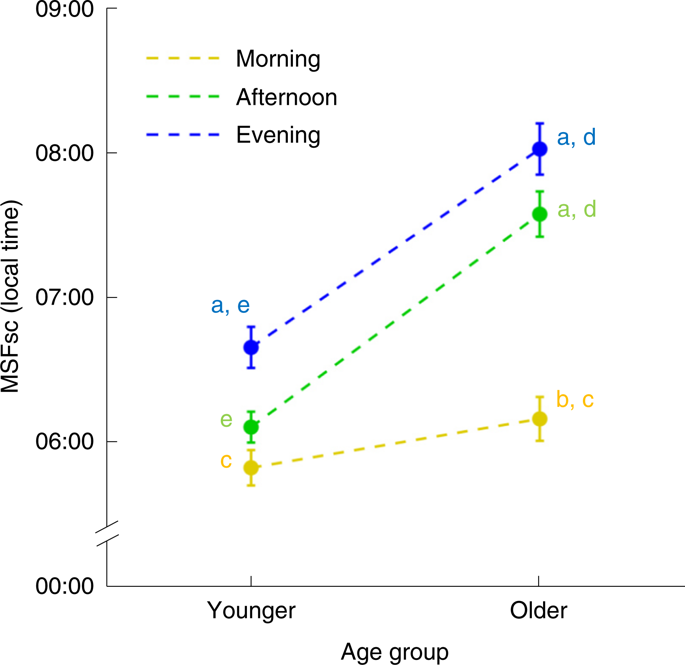当前位置:
X-MOL 学术
›
Nat. Hum. Behav.
›
论文详情
Our official English website, www.x-mol.net, welcomes your feedback! (Note: you will need to create a separate account there.)
Interplay of chronotype and school timing predicts school performance.
Nature Human Behaviour ( IF 29.9 ) Pub Date : 2020-02-10 , DOI: 10.1038/s41562-020-0820-2 Andrea P Goldin 1 , Mariano Sigman 1, 2 , Gisela Braier 1 , Diego A Golombek 3 , María J Leone 1, 3
Nature Human Behaviour ( IF 29.9 ) Pub Date : 2020-02-10 , DOI: 10.1038/s41562-020-0820-2 Andrea P Goldin 1 , Mariano Sigman 1, 2 , Gisela Braier 1 , Diego A Golombek 3 , María J Leone 1, 3
Affiliation

|
Most adolescents exhibit very late chronotypes and attend school early in the morning, a misalignment that can affect their health and psychological well-being. Here we examine how the interaction between the chronotype and school timing of an individual influences academic performance, studying a unique sample of 753 Argentinian students who were randomly assigned to start school in the morning (07:45), afternoon (12:40) or evening (17:20). Although chronotypes tend to align partially with class time, this effect is insufficient to fully account for the differences with school start time. We show that (1) for morning-attending students, early chronotypes perform better than late chronotypes in all school subjects, an effect that is largest for maths; (2) this effect vanishes for students who attend school in the afternoon; and (3) late chronotypes benefit from evening classes. Together, these results demonstrate that academic performance is improved when school times are better aligned with the biological rhythms of adolescents.
中文翻译:

表型和学校时间的相互作用可以预测学校的表现。
大多数青少年表现出很晚的表型,并在清晨上学,这种失调会影响他们的健康和心理健康。在这里,我们研究了753名阿根廷学生的独特样本,这些人被随机分配在早上(07:45),下午(12:40)或晚上(17:20)。尽管表型倾向于与上课时间部分吻合,但这种效果不足以完全解决与上学时间的差异。我们证明(1)对于早读的学生,早期的表型在所有学校科目中的表现都优于晚期的表型,这在数学上是最大的;(2)对于下午上学的学生,这种影响消失了;(3)晚型表型受益于夜校。总之,这些结果表明,当学校学习时间与青少年的生物节律更好地匹配时,学业成绩将得到改善。
更新日期:2020-02-10
中文翻译:

表型和学校时间的相互作用可以预测学校的表现。
大多数青少年表现出很晚的表型,并在清晨上学,这种失调会影响他们的健康和心理健康。在这里,我们研究了753名阿根廷学生的独特样本,这些人被随机分配在早上(07:45),下午(12:40)或晚上(17:20)。尽管表型倾向于与上课时间部分吻合,但这种效果不足以完全解决与上学时间的差异。我们证明(1)对于早读的学生,早期的表型在所有学校科目中的表现都优于晚期的表型,这在数学上是最大的;(2)对于下午上学的学生,这种影响消失了;(3)晚型表型受益于夜校。总之,这些结果表明,当学校学习时间与青少年的生物节律更好地匹配时,学业成绩将得到改善。



























 京公网安备 11010802027423号
京公网安备 11010802027423号